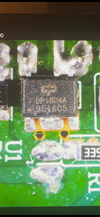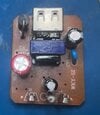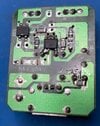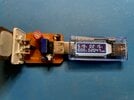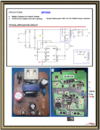Hi all. My current project involves a relatively simple wall charger/power supply. The circuit board is not complicated at all. So far, I have tested each component on the board and all seem to be working properly. The only component I cannot test, with relative certainty of its proper operation, is the piece with DP1804A on it. A picture of it is attached. It is obviously the "brains" of the entire circuit board. I am unable to find this same component for purchase, but I have found the Datasheet for a DP1804 without the "A" on the end. It says it is a "Quasi-Resonant PSR CC/CV PWM Power Switch."
I am hoping that there is a suitable replacement, if I cannot find the exact same one, and that is why I am here. I have tried to find one by entering the part number and "equivalent" without success. It seems as though it may be a common component and would be used in other wall chargers, or something similar in specs could be found to replace it. Unfortunately, I am not at the level of electronics knowledge to go about finding one. Would any of you know of something compatible, after looking at the Datasheet I have supplied?
Thanks in advance. PS- I realize I could probably buy another charger for less than what it will cost me to fix this one, however, that is not the point. The challenge to fix it is.
I am hoping that there is a suitable replacement, if I cannot find the exact same one, and that is why I am here. I have tried to find one by entering the part number and "equivalent" without success. It seems as though it may be a common component and would be used in other wall chargers, or something similar in specs could be found to replace it. Unfortunately, I am not at the level of electronics knowledge to go about finding one. Would any of you know of something compatible, after looking at the Datasheet I have supplied?
Thanks in advance. PS- I realize I could probably buy another charger for less than what it will cost me to fix this one, however, that is not the point. The challenge to fix it is.
